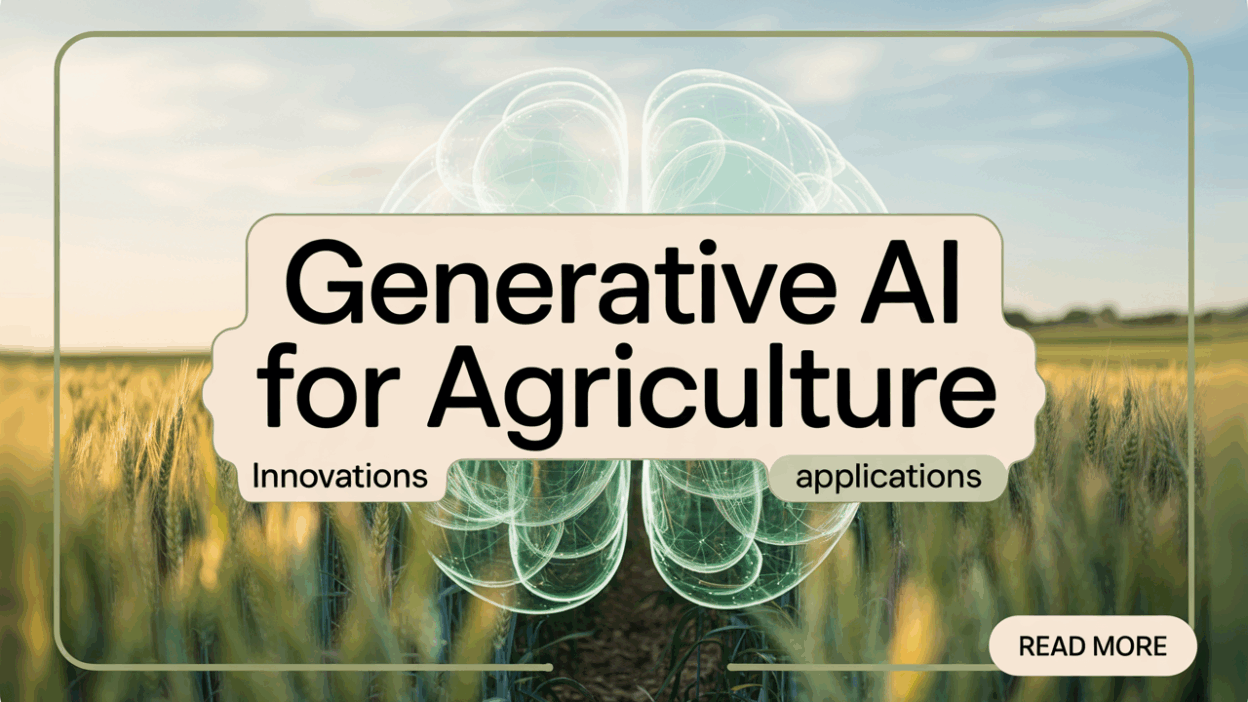Generative artificial intelligence (AI) is rapidly transforming industries, and agriculture is no exception. With the global population expected to reach nearly 10 billion by 2050, there’s increasing pressure to produce more food using fewer resources. Generative AI offers innovative solutions to address these challenges by enabling smarter decision-making, optimizing resource usage, and improving crop yields . In this blog post, we’ll explore how generative AI is reshaping agriculture through real-world applications and emerging technologies.
What Is Generative AI in Agriculture?
Generative AI refers to a subset of artificial intelligence that creates new content—such as text, images, or data models—based on patterns learned from existing information. In agriculture, this technology is used to generate predictive analytics, automate complex processes, and design sustainable farming strategies . Unlike traditional AI models that focus on classification or detection, generative AI can simulate scenarios, create synthetic datasets, and even assist in developing new agricultural products .
Practical Applications of Generative AI in Farming
1. Precision Farming and Crop Optimization
One of the most promising uses of generative AI in agriculture is precision farming. By analyzing historical and real-time data, generative models can optimize planting strategies, irrigation schedules, and fertilizer applications to maximize yield while minimizing waste . For example, AI-driven simulations help farmers determine the best time to plant crops based on weather forecasts and soil conditions.
2. Pest and Disease Management
Generative AI supports early detection and management of pests and diseases by generating predictive models that analyze environmental factors and crop health indicators . These models allow farmers to take proactive measures, such as targeted pesticide application, which reduces chemical use and promotes sustainable farming practices.
3. Supply Chain Optimization
Beyond the field, generative AI plays a crucial role in optimizing agri-food supply chains. From demand forecasting to logistics planning, AI-generated insights help reduce food waste, improve distribution efficiency, and ensure timely delivery of fresh produce to markets . This leads to better profitability for farmers and improved food security globally.
4. Seed Development and Genetic Research
Innovative companies like Agmatix are leveraging generative AI to accelerate the development of higher-yielding and climate-resilient seed varieties. Using platforms like Amazon Bedrock, researchers can process vast amounts of genetic and environmental data to simulate breeding outcomes and identify optimal combinations for future crops .
5. Natural Resource Management
Water scarcity and soil degradation are major concerns in modern agriculture. Generative AI helps manage these resources more sustainably by creating models that optimize water usage, predict soil erosion risks, and recommend conservation techniques. Agribusinesses are increasingly adopting these tools to maintain productivity while preserving ecological balance .
The Future of Generative AI in Agriculture
As generative AI continues to evolve, its integration into agriculture promises even more groundbreaking innovations. Emerging trends include the use of large language models (LLMs) to curate local knowledge for food safety, and AI-powered chatbots that provide real-time advisory services to farmers in remote areas . Additionally, with advancements in synthetic data generation, researchers can simulate various farming scenarios without relying solely on physical trials, speeding up innovation cycles .
Conclusion
Generative AI is not just a futuristic concept—it’s already making a tangible impact in agriculture today. From improving crop yields and managing pests to streamlining supply chains and supporting sustainable practices, the benefits are clear. As the technology becomes more accessible, it will empower farmers worldwide to meet growing food demands efficiently and responsibly . The future of agriculture lies in embracing these intelligent systems to cultivate not just crops, but a more resilient and productive food ecosystem.



